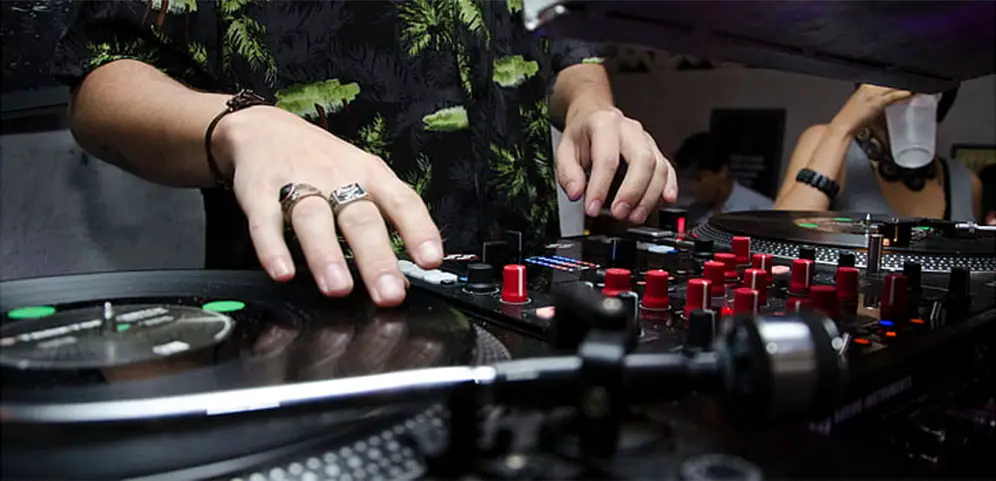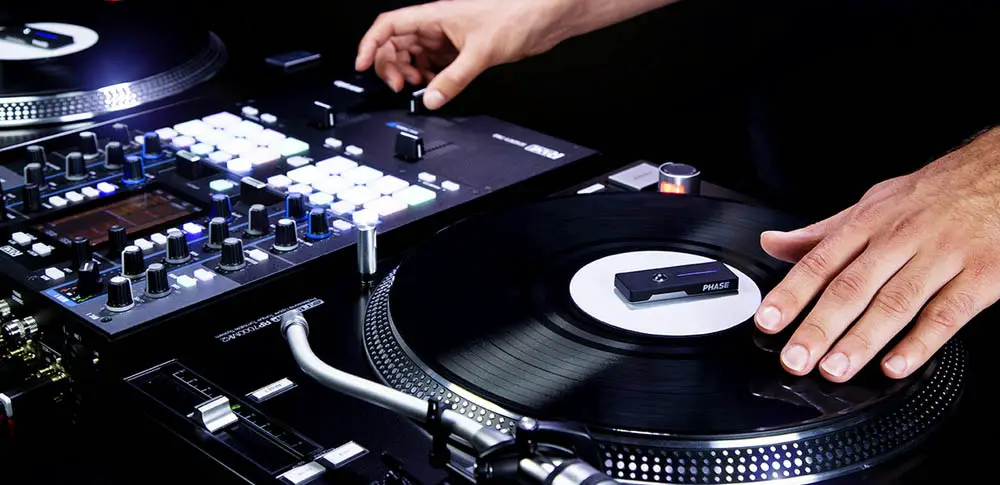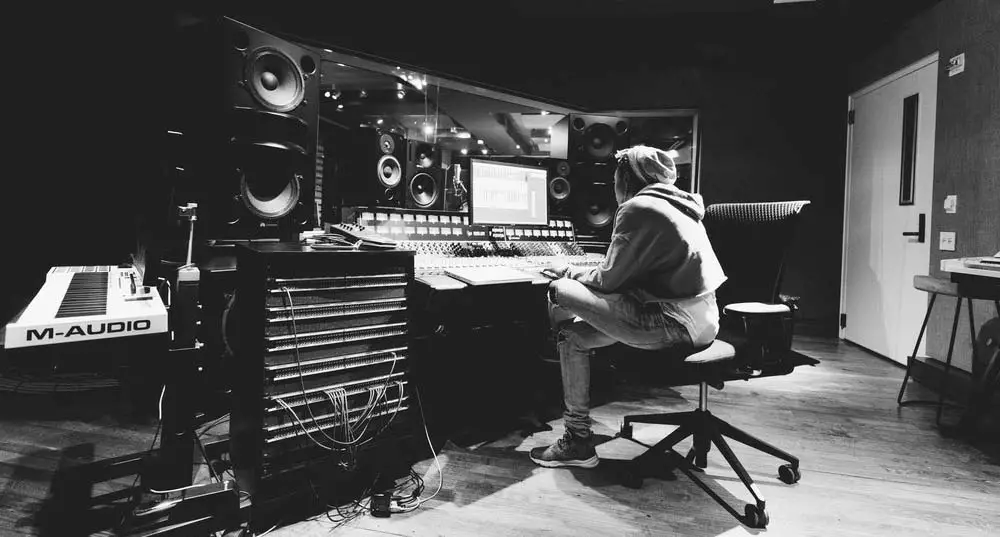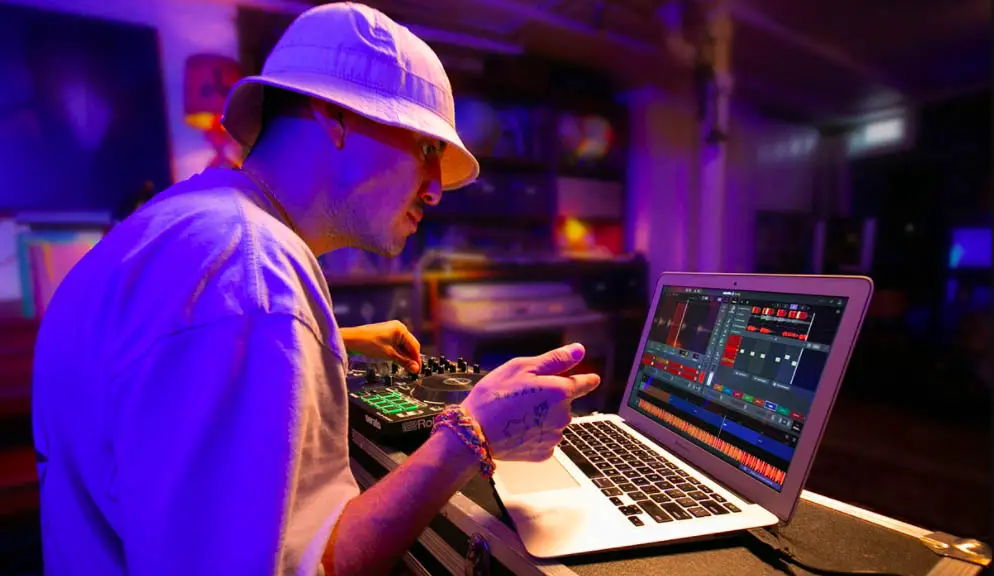Who Invented DJing?
DJing has become one of the most influential musical techniques of the 20th and 21st centuries.
The art of DJing and turntablism has developed from a technique designed to keep music rolling constantly between different tracks to a fully-fledged art form and culture.
Modern DJing involves insane performances executed on high-tech setups through gigantic sound systems.
Despite the dizzying status of DJing today, it has humble origins.
So, where do the origins of DJing lie, and who invented it?
DJing vs Turntablism
In essence, there are two questions here; who invented DJing and who invented turntablism (the art of DJing)?
The definition of what it is to be a DJ – a disc jockey – has changed massively over time.
The early pioneers of DJing, its earliest ‘inventors’, tended to be radio hosts. The job of the radio host was to maintain the radio schedule and keep the music rolling between various broadcasts.
In some way, these radio hosts invented DJing.
But, DJing then quickly evolved into something far more broad and complex – a musical technique in its own right.
So, how did DJing evolve?
In The Beginning…There Was Vinyl

DJ stands for disc jockey. The disc here is originally the vinyl record that remains one of the culture’s main icons today.
The groundwork for vinyl technology was set in the late 1900s but it wasn’t until the early 20th century that Thomas Edison refined the invention and created the first commercially available phonographs.
The concept of vinyl is beautifully simple but the initial technology was very complex at the time.
Vibrations created from sound in the real world would physically vibrate a needle that cut a waveform into a vinyl disc. Sounds were captured and preserved in physical format, and the resulting vinyl disc could then be played back through a speaker system.
This technology was refined and eventually, vinyl became the go-to format for music production and recording alongside cassette and magnetic tape.
The Earliest Days of DJing
DJ stands for disc jockey. This term was coined in 1935 by American radio presenter Walter Winchell.
The disc, as we know, was the vinyl record. The jockey was the operator.
In 1909, Ray Newby became one of the first individuals to play records on the radio on a near-constant basis.
Unwittingly, he perhaps became the first disc jockey. He operated vinyl players to keep music rolling on air between various scheduled radio shows, broadcasts, and reports.
Radio presenter Martin Block’s radio show Make Believe Ballroom later on in the 40s involved the constant playback of jazz and dance songs and in 1941, the term disc jockey appeared in the print magazine Variety.
These early radio personalities became the first disc jockeys in the strictest sense of the word, but there was still a long way to go, and DJing quickly evolved.
DJing and Turntablism
DJing now involves a diverse array of techniques but most would agree that ‘mixing’ is the core technique.
Mixing involves the use of two turntables, or more, to create seamless musical transitions between music.
As turntables became more technologically advanced, affordable, and portable, DJs and experimental composers who used vinyl records began to develop new techniques.
Mixing was one of them, and DJs started to create constant streams of overlapping music without breaks or transitions between the records.

The Art of Mixing
In 1943, radio DJ Jimmy Saville was said to be the first DJ to mix records together with seamless transitions. At the Loyal Order of Ancient Shepherds, an English social club, he would play jazz records back-to-back using two records mounted on two turntables.
Later, in 1947 France at the club Whiskey á Go-Go in Paris, DJs would play music back-to-back at covert speakeasy parties during Nazi occupation at what became the first disco club. Here, we can also see the early origins of the rave scene and sound system culture.
The post-war period vibrantly liberated music and new genres began to spring up left, right, and center. Sound system culture took root and In Jamaica, sound systems or hi-fis began to launch street parties in which a ‘selector’ would juggle music from two turntables.
The swinging 60s had begun and DJs of various kinds began to develop new techniques of keeping music rolling constantly for the sake of dancing and partying.
Some parties, known as sock hop or record hop parties, would involve live drummers that kept the beat going in between tracks.
Towards Beatmatching and Turntablism
In 1969, DJ Francis Grasso pioneered the technique of beatmatching at a New York nightclub called Sanctuary.
In the late 1960s and early 1970s, specialized equipment began to evolve including dual turntable systems with crossfaders. The 1970s also saw the emergence of hip-hop and other musical genres that involved loops and sampling. Beatmatching became increasingly accessible.
During this period, music underwent an important transition that aided the development of DJing.
As opposed to the free-flowing jazz of the 30s, 40s, and 50s, dance hits and hip-hop became more repetitive with repeating motifs and loops. These loops nvolved solid 4:4 drum beats that maintained their tempos consistently and evenly, much like modern dance music.
One of the most famous loops of all time is the Amen Break, which first featured in the 1969 soul track Amen, Brother by the Winstons.
Around 1973, DJ Kool Herc invented the breakbeat technique and hip hop parties in the Bronx set the scene for a new wave of creative turntablists that cut and chopped between different beats and breaks, artfully flowing between many different records.
Grandmaster Flash, the Grand Wizard Theodore, DJ Kool Herc, and Afrika Bambaataa were the forefathers of hip hop and they developed incredible skills; beat juggling, beatmatching, and scratching combined to cement the DJ as a musical artist and not just an operator or jockey of machines.
In the 1970s, the art of DJing had really begun to take root. The rise of hip-hop and electronic music through the late 70s and 80s would elevate DJing to a new level of international fame and recognition.
The Rise of Electronic Music

The 70s and 80s saw the evolution of electronic music across America and Europe. By the 90s, electronic music and club culture was the driving force behind the increasing fame and rising profile of the DJ.
DJing became both very popular and necessary; there was a huge demand for music that could keep on pumping at high volume all day and all night! DJs needed access to new music, new sets that kept audiences dancing.
In 1977, DJ Tom L. Lewis created the Disco Bible (later Disco Beats), a catalog of dance tunes that listed tracks by artists and most importantly, BPM.
This made it easier for DJs to create mixes between tracks using their BPM, making adjustments to the pitch of records to keep transitions clean, stable, and accurate.
In the 80s and 90s, electronic music, disco, rave, and hip-hop scenes became rocket-fueled, rapidly consolidating their influence and popularity around the world.
Genres and subgenres began to forge DJs that covered everything from hip-hop and reggae to jungle and drum n’ bass, techno, and house to hardcore, hardstyle, and other increasingly aggressive energy-packed subgenres.
Scratching
Though arguably a component of DJing since the late 60s, scratching also evolved rapidly in the 80s and 90s.
Spinbad, Cash Money, and DJ Jazzy Jeff are widely credited as some of the first hip hop artists to widely develop and implement modern scratching methods.
Scratching developed into DJ’s specialist and competitive component, a technique that allowed DJs to really flaunt their skill and prove to the world that they don’t just spin records and push buttons.
DJing Today

We’re now in the modern era of DJing.
Electronic music production and the proliferation of electronic dance music has installed the DJ towards the center of modern music culture.
DJs now certainly share many of the same roles, responsibilities, skills, and techniques of their predecessors. The aim of the game is still to fuse music together in one rolling composition that takes an audience on a journey through sound.
Performances have become more intricate and equipment has also become more refined and accessible. From CDJs to controllers and laptop mixing, DJing is both a profession and a hobby that has captured the hearts and minds of millions worldwide.
So, Who Invented DJing?
To revert to the original question, it’s very difficult to pinpoint who invented DJing as it evolved rapidly through a 60 to 70 year period.
Modern technology carried DJs forward, enabling new techniques and new levels of precision and skill, allowing the modern DJ to tear through music for hours on end whilst the audience enjoys a seamless musical experience.
At its origin, Ray Newby may have been the first DJ in the true sense of the definition of ‘disc jockey’, even though the term DJ itself didn’t even exist at the time!
In terms of the modern definition of DJ, which encompasses a much wider remit, it’s anyone’s guess as to who actually invented it.